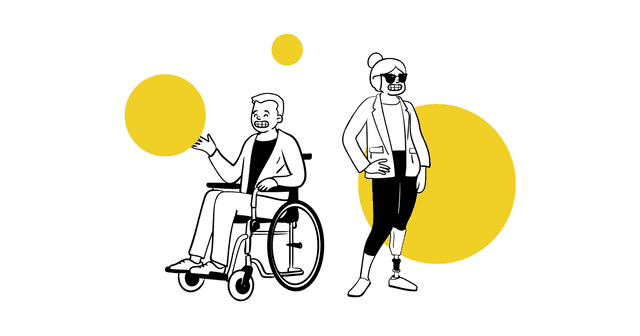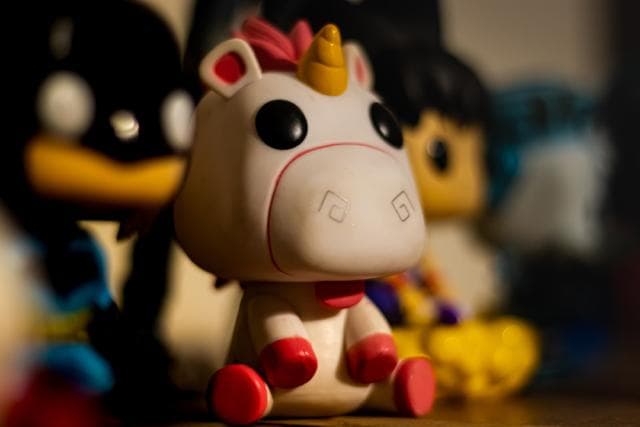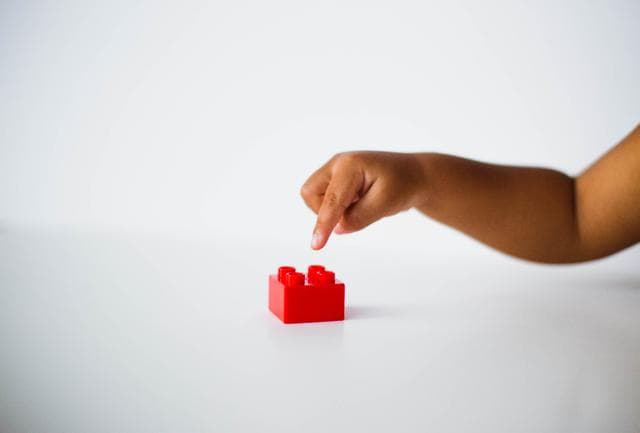UX… What?
A brief introduction to the concept of User Experience
Have you ever had that feeling while interacting with an interface, digital or analog, that everything is flowing and there are no obstacles? It gives the impression that the product or service is reading your mind, expecting and foreseeing your steps and clicks, well, that happens for one reason, and it’s called User Experience.
“User experience encompasses all aspects of the end-user's interaction with the company, its services, and its products.”
— Don Norman
It is usually designed by multidisciplinary teams and goes throughout all the cases where users interact with the service, the product, and even the company. There is a lot of work behind the scenes and, even though the digital industry has taken the concept recently, it has been applied for a long time in many sectors such as museums, cinemas, amusement parks, catering and automotive, to name a few.
Then, why such a huge impact in the digital space?
Well, it’s easy, people are currently wearing their devices everywhere and doing most daily actions on the Internet, using mobile apps and websites that cover their needs and accompany them, in the best case, through some years. It’s in this context where User Experience Design gets stronger and significantly improves digital products by analyzing the user interaction patterns, their thoughts, and the behavioral changes that appear over time. It’s all about turning the mindset from in-out to out-in, from presupposing to figuring out, from a closed offer to an open solution because unhappy users mean unsuccessful projects.
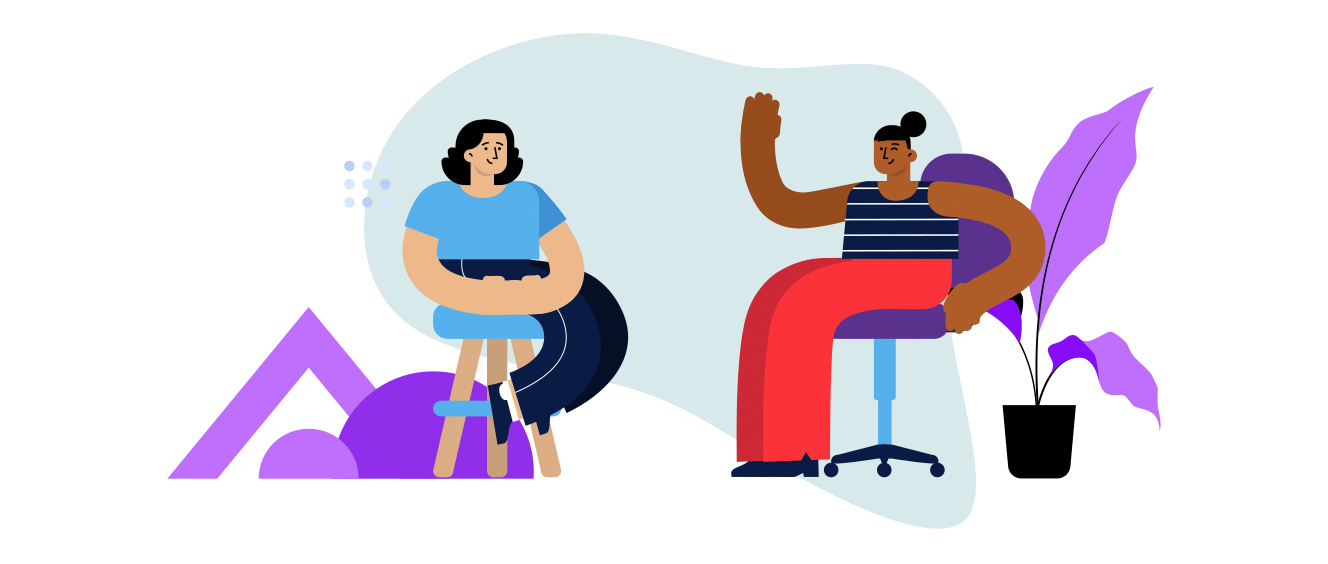
This change of paradigm entails new processes that focus on understanding the users needs and their contexts like User-Centered Design or Design Thinking. Iterative methods through which we can get real insights from the audience, by using different research techniques and tools, that will be the base of the user interface design and/or product reframes.
“The User-centered design process outlines the phases throughout a design and development life-cycle all while focusing on gaining a deep understanding of who will be using the product.”
— usability.gov
In this continuous processes we go through several stages, foundation of Design Thinking, which are divided into three main blocks: observe, reflect, and make. Each one with a different purpose and goals.
Observing
This step is about empathy and getting to know the people behind the “user” label. Understand their context and uncovering their needs, as well as understanding their insights listening for feedback. This block is made up of two parts, empathize and understand, and research and define.
Reflecting
Put everybody on the same page, know each other, set a common aim, and align business goals with user needs. Uncover new insights and reframe if it’s necessary to finally decide the next move. This block is made up of two parts, ideate and create, and prototype and test with real users.
Making
Time to fail early and learn fast, explore possibilities, communicate concepts, share prototypes, and carry out user testing to find the idea to follow and develop. This block implies implement and test with real users.
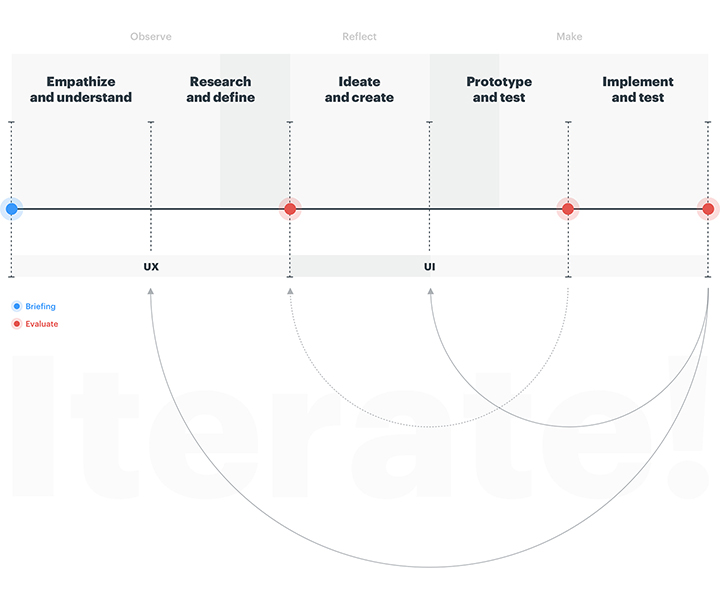
Now, we can affirm that User Experience comes from field studies, idea validation, empathy, and observation, but is everything done simultaneously by the same team? Nope, it is divided into two principal phases: UX Research and UX/UI Design.
The research can be qualitative, based on observational findings, emotions and human behaviors, or quantitative, extracted from metrics and actual data. The qual methods are exploratory and helpful to get an in-depth understanding of something that is not possible to reduce to numbers, however, there is always a level of interpretation or subjective assimilation of the data. On the other hand, the quant results are statistical, objective measurements that portray the user interaction. These modes of operating are driven by UX Researchers, experts who come from several disciplines like ethnology, sociology, psychology, or design.
The UX/UI design takes advantage of the conclusions and results of the research to define and create the best user interface and interaction. So, relying on the user insights, and applying the best practices, laws of user experience, and design principles, an answer is proposed, prototyped, and tested in order to confirm that the design is covering the user needs. The team in charge of this stage is usually formed by UX/UI designers, UI designers, and IxD designers. But here we are opening the box of role titles… In a nutshell, researchers and designers work together through a cyclic process to find the optimal proposal according to the business goals and user necessities.
Ok great, that’s pretty cool but…
What makes a good UX design?
Keep in mind that good design is invisible so, if it is bad, it will simply arise while interacting. The key factors that will provide the desired user experience normally are:
Usefulness: The product needs a purpose, a goal, should be original and fulfill a need.
Usability: Should be easy to use, usable to let users achieve their goal.
Findability: Content needs to be navigable and available, easy to find.
Credibility: Users should trust and believe in the provided product. No second chances.
Desirability: The more desirable a product is, the faster is going to get the desired positioning and spreading.It is conveyed in design through branding, image, identity, and aesthetics.
Accessibility: Content needs to be accessible to people with disabilities (all kinds).
Value: The product must deliver value, an added value in a user’s life.
Those points should be considered from the beginning and defined in the scope of the project or the minimum viable product (MVP) requirements. But, a pure MVP approach can lead to decisions that interfere with the user experience decreasing the quality and adding less value than the expected, so in that definition, we should distinguish between a minimum viable product (MVP), a minimum usable product (MUP), and minimum desirable product (MDP) because the user experience is designed through the whole process, not at the end or as an intermediate step, and it is necessary to understand what the project is aiming for. And that takes us to the Pyramid of User Needs where those concepts are displayed, and we can graphically display several types of minimum products models.
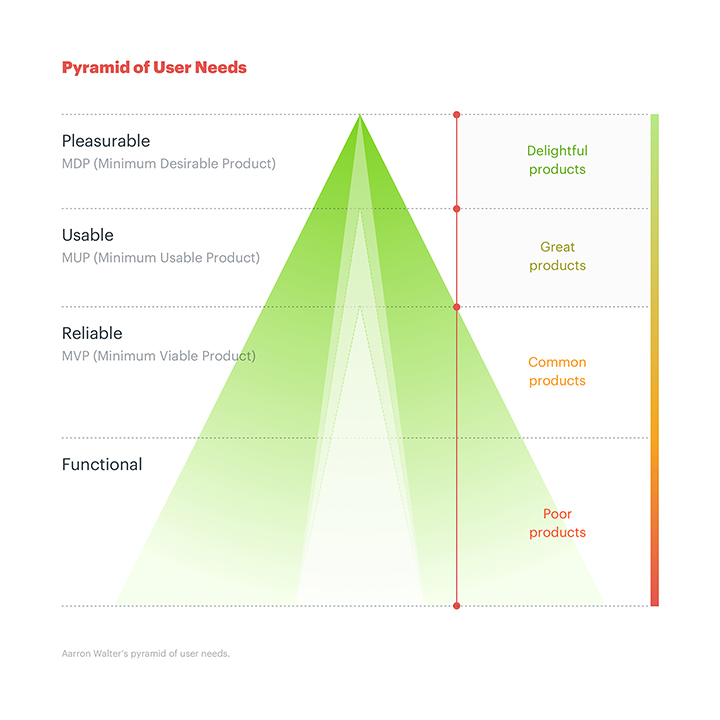
Defined by Aarron Walter, in his book Designing for Emotion, the pyramid is based on Maslow’s hierarchy of needs and specifies that basic user needs must be covered before moving up and getting to superior necessities. In terms of User Experience, the interesting approach is to fulfill in some level each layer of the pyramid, instead of going up section by section, the scope should vary horizontally, wrapping a part of each stratum. Otherwise, the success of the product could be compromised.
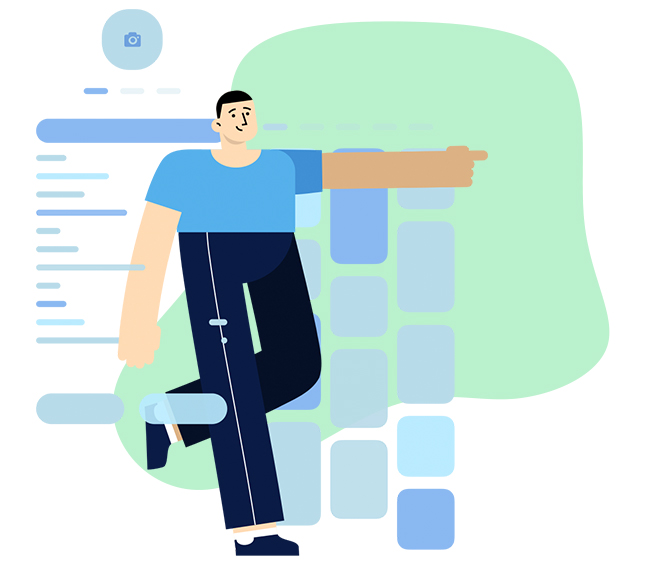
We all know that every project is different and has its special features but, if you want to settle a digital product or service nowadays, considering the competition and the high standards, you should always go for an MDP, obviously, setting the desirability inside a specific range. Adding value to the user through the experience is not optional, all the previous mentioned key factors must be, at least in a basic or acceptable level, worked out and improved through iteration and having them in mind from the beginning.
To sum up, to ideate and create products that can add value as well as rival in the corresponding industry is hard, and take a lot of time and effort. In order to guarantee the investment, it is necessary to put the users at the center of the process, and design and develop based on their insights and needs to get a successful project.
In case you want to dive deeper into User Experience:
A List Apart For people who make websites.
Nielsen Norman Group World Leaders in Research-Based User Experience.
UX Booth A publication by and for the user experience community.
UX Collective For designers, thinkers and makers.
UX Matters Insights and inspiration for the user experience community.
UX Planet One-stop resource for everything related to user experience.
View all posts tagged as
GitHub Hackathon
Transform your workflow and build something original.
Read Case Study